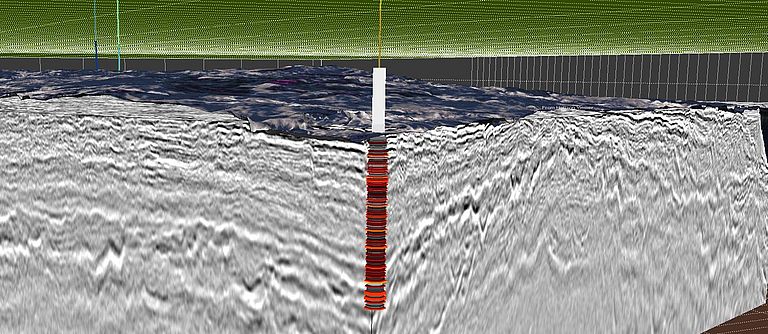Opening of the Core-Log-Seismic Integration Research Centre
Three Helmholtz Centres team up for a virtual facility for geological and geophysical data
Earth scientists are interested in studying the Earth system on vastly different scales ranging from the atomic scale when looking at individual minerals in a rock sample to geodynamic processes that act over thousands of kilometers. Consequently, they use very different observation technologies from taking rock samples in boreholes to conducting geophysical experiments. Each of these methods has its advantages and disadvantages. For example, borehole samples only provide information on a very small region of the subsurface while geophysical experiments do not allow to study any rocks in detail. Therefore, bridging the observation gap between borehole samples and geophysical experiments is crucial - especially if methods can be found to extrapolate the borehole findings into the surrounding subsurface based on the geophysical measurements. One crucial bridging-technology is the measurement of physical properties under in situ conditions in the borehole. These methods are called wireline logging and logging while drilling.
So-called Core-log-seismic integration technologies have been developed by the oil and gas industry for the past thirty years and they have completely changed the way how oil and gas reservoirs are imaged and characterized. However, the methods are only rarely used in academia mainly because few scientific groups have the critical mass to bring together all the necessary expertise. Also, the lack of suitable data hampers the large-scale application of core-log-seismic integration. Therefore, one of the motivations for the new Core-Log-Seismic Integration Research Centre (CLSI) is to facilitate the exchange of unique scientific infrastructure such as the MeBo seafloor drilling system (https://www.marum.de/en/Infrastructure/Sea-floor-drill-rig-MARUM-MeBo200.html), the P-Cable 3D seismic system (https://ncs-subsea.com/) or the innovative hydraulic coring system Hipercorig (https://gfzpublic.gfz-potsdam.de/pubman/faces/ViewItemOverviewPage.jsp?itemId=item_5005260) within the wider community.
The kick-off workshop for the new facility brought together more than 60 scientists from Sweden, Norway, US, UK, Spain, Italy, New Zealand, Netherlands, Switzerland, Austria, France, Malta, Taiwan, and Germany. The presentations and discussions showed various promising future directions for the field of core log seismic integration. These include implementing digital data standards and making them available to machine learning approaches and suggestions on how to keep the international community involved.
Professor Christian Berndt as one of the organizers of the workshop is very pleased: “The workshop was a great success although it had to be held virtually because of the corona pandemic. There is a lot of enthusiasm for this kind of initiative in the community and we have scoped several research proposals, e.g. on data science and geohazards. This will bring together teams that have not collaborated before.”
More information can be found at: www.cls-i.de.



